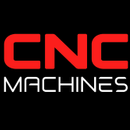CNC Machining: Reinventing Industry 4.0 and Shaping the Future of Manufacturing

CNC Machining: Reinventing Industry 4.0 and Shaping the Future of Manufacturing
As we stand on the brink of the Fourth Industrial Revolution, CNC (Computer Numerical Control) machining plays a pivotal role in transforming modern manufacturing. This article explores CNC machining's evolution, the various processes involved, its applications across industries, and future manufacturing projections for the 2030s.
Introduction to CNC Machining
CNC machining refers to the automated control of machining tools via a computer, allowing for high precision and efficiency in manufacturing components. This technology has evolved dramatically from its inception, moving from basic machine controls to sophisticated systems enabling complex designs and mass production.
The Evolution of CNC Machining
CNC machining has come a long way since the first numerical control (NC) machines were developed in the 1940s and 1950s. Here's a brief overview of its evolution:
- Early NC Machines: Initially operated using punched tape and rudimentary control systems.
- Introduction of CNC: The 1970s brought CNC technology, utilizing computers to automate machining, allowing for more complex geometries and faster production.
- Integration with CAD/CAM: In the 1980s and 1990s, Computer-Aided Design (CAD) and Computer-Aided Manufacturing (CAM) streamlined design and production processes.
Different Types of CNC Machining
CNC machining encompasses several processes, each with unique capabilities and applications:
- CNC Milling: Employs rotary cutters to remove material from a workpiece, ideal for creating complex shapes.
- CNC Turning: Involves rotating a workpiece against a stationary cutting tool, commonly used for producing cylindrical parts.
- CNC Routing: Primarily used for cutting and shaping materials like wood, plastics, and composites.
- CNC Plasma Cutting: Uses a plasma torch to cut metals with high precision.
- CNC Laser Cutting: Employs a laser to cut materials, known for its accuracy and clean edges.
The CNC Machining Process
The CNC machining process is a sophisticated operation involving several key components:
- CNC Controller: The brain of the CNC machine, interpreting G-code instructions generated by CAD/CAM software.
- Cutting Tool Movement: The CNC controller directs the cutting tool's movements along multiple axes (typically three to five), ensuring precise cutting according to design specifications.
- Speeds and Feeds: The controller adjusts cutting speed (the rate at which the tool moves) and feed rate (the speed at which the workpiece is fed into the tool) to optimize performance and ensure quality finishes.
Industry Applications of CNC Machining
CNC machining finds applications across various industries, including:
- Aerospace: Manufacturing complex components with stringent quality and safety standards.
- Automotive: Producing precision parts that require high levels of accuracy and repeatability.
- Medical: Fabricating implants and surgical instruments with biocompatible materials.
- Electronics: Creating intricate circuit boards and components for electronic devices.
Additive vs. Subtractive CNC Machining
CNC machining includes both additive and subtractive processes, each with distinct methodologies:
- Subtractive Machining: Involves removing material from a solid block to create a part. Common processes include milling, turning, and drilling. This method is highly efficient for producing precise components but can lead to material waste.
- Additive Manufacturing: Refers to processes like 3D printing, where material is added layer by layer to build a part. This technique allows for greater design flexibility and reduces waste, making it ideal for complex geometries.
The Evolution of Automation in CNC Machining
Looking toward the 2030s, automation in CNC machining is expected to evolve significantly:
- Smart Manufacturing: Integration of IoT (Internet of Things) technologies will enable machines to communicate with each other, optimizing production schedules and minimizing downtime.
- AI and Machine Learning: AI-driven systems will analyze production data to enhance decision-making, predictive maintenance, and overall process efficiency.
- Collaborative Robots (Cobots): The use of cobots alongside human operators will improve safety and efficiency in machining processes.
Choosing the Best CNC Brands
When selecting a CNC machine, consider the following factors:
- Service and Support: Choose brands that offer local service and technical support to minimize downtime.
- Dependability: Research user reviews and testimonials to gauge reliability and performance.
- Quality: Opt for machines known for their build quality and precision, as this directly impacts production efficiency.
The Future of CNC Machining: Market Growth and Projections
The global CNC machine market is valued at USD $86 billion in 2022, projected to reach USD $140 billion by 2029, exhibiting a CAGR of 7.1% during this forecast period. This growth underscores the increasing adoption of CNC technology and the shift toward automation and smart manufacturing.
Industry Growth Expectations
The CNC machining industry is expected to see significant growth in dollar volume, driven by innovations in technology and the ongoing transition to Industry 4.0. As manufacturers embrace these changes, they will enhance efficiency, reduce costs, and improve overall production capabilities.
Conclusion
CNC machining is at the forefront of transforming modern manufacturing, particularly in the context of Industry 4.0. Looking toward the 2030s, advancements in automation, AI, and smart manufacturing will reshape how CNC machines are utilized, leading to more efficient and innovative production processes. By understanding CNC machining's evolution, its applications, and how to choose the right equipment, manufacturers can position themselves for success in an increasingly competitive landscape. The future of CNC machining is bright, with significant dollar volume growth on the horizon, driven by continuous innovation and evolving industry demands.


